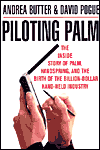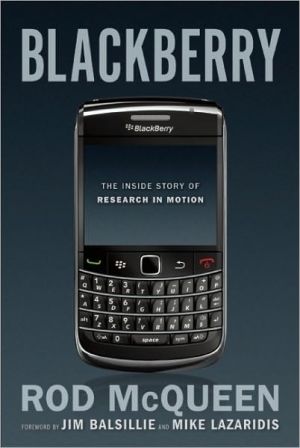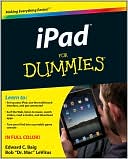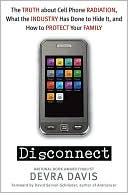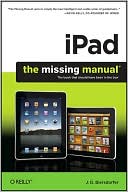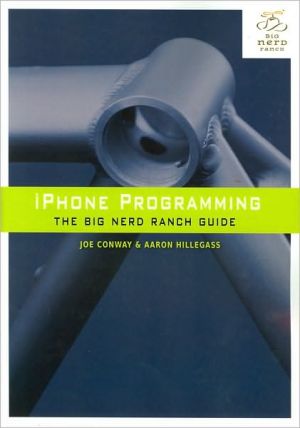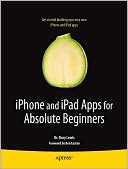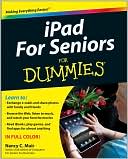Piloting Palm: The inside Story of Palm, Handspring, and the Birth of the Billion-Dollar Handheld Industry
The buzz on PILOTING PALM\ "Thorough, intelligent, and inspiring, Piloting Palm tells one of the most remarkable stories in the history of American business— the birth of the handheld industry. There are important lessons for entrepreneurs and managers in almost every chapter. A fascinating book!"\ — Emanuel Rosen, author, The Anatomy of Buzz\ "The Palm is so ubiquitous, it's easy to forget what life was like BP (before Palm). If you want the inside scoop on the product that changed your life...
Search in google:
The definitive behind-the-scenes story of the visionary team that launched the handheld industry. Palm insider Andrea Butter and New York Times columnist David Pogue — with full, exclusive cooperation of the company's founders and more than fifty key Palm and Handspring executives — tell the riveting tale of the start of an industry constantly in the headlines. The origins of this volatile industry began with the tiny team who beat staggering odds to turn the PalmPilot into a billion-dollar market and later took their ultimate vision to Handspring, now Palm's most powerful rival. Many of today's current events relating to the competition in this industry are forecasted in this important business drama. The authors take an unprecedented look at how the visionary founders of the industry led one of the most successful startups in history to succeed against all odds-including a shoestring budget, shortsighted corporate partners, and competition from Microsoft. The roller-coaster ride is full of insight into the bungles of venture capitalists, the allure and pitfalls of partnerships with giant corporations, and the steely determination needed to maintain entrepreneurial and visionary independence. With gripping accounts of the last-minute crises that almost torpedoed the PalmPilot on the eve of its unveiling, and the triumphant, unprecedented reception of Palm in the marketplace, as well as the glimpses into the future of this industry, this book is as entertaining as it is instructional. Key revelations include: * The principles of business, economy, and product design that led Palm to succeed where billion-dollar corporations like Apple,Motorola, and Casio had failed. * Important moments in technological development of the handheld such as the secret "Easter egg," a software surprise planted in the Palm software that nearly sank launch plans. * Unique insight into the showdown with Microsoft, and 3Com's tragic decision not to make Palm independent that led Palm's founder Jeff Hanwkins and CEO Donna Dubinsky to take their vision elsewhere. * The ongoing competition between Palm and Handspring. The new rivals to contend with including Sony. Publishers Weekly The swift Internet-like alterations in Palm's corporate structure make the company an excellent case study of the late 1990s technology-driven boom and bust. True, Palm was not precisely a dot-com stock, but who can argue that the consumer impulse to drop $500 on a spruced-up date book was anything but high-tech froth? Palm was founded in 1992 with hard-won seed money, just a few years before venture capital rolled across Silicon Valley like a tsunami. It began as the junior partner in an unsuccessful consortium effort to compete with Apple Computer's Newton, the breakthrough handheld device. This failed strategy inspired the software executives to build their own hardware without relying on strategic partnerships, until financing troubles forced them to sell out to a larger firm, modem-maker U.S. Robotics. When USR was acquired by 3Com, Palm became the junior partner in a megamerger. Eventually, Palm was spun out in an IPO during the heady days of early 2000, and employees drooled as the stock price spiked to $165 on the first day of trading. (Today Palm shares trade between $2 and $4.) The authors give detailed portraits of both high-tech product launches and investment banking negotiations without once getting bogged down in the jargon of either world. No doubt readers can thank coauthor Pogue, a New York Times columnist, for the smooth, lucid prose. Former Palm marketing v-p Butter is an unabashed fan of the company's founders technologist Jeff Hawkins, CEO Donna Dubinsky and marketing director Ed Colligan and she makes a compelling case that these three launched the handheld computer industry. (Mar.) Forecast: This title will easily fit into the B-school curriculum on corporate finance or marketing, since it offers insights into both. Hardcore techies should enjoy it, too, because it's filled with colorful portrayals of leading industry figures. Copyright 2001 Cahners Business Information.
\ Chapter 1\ In the Valley of Dreams
AcknowledgmentsNote to the ReaderPrologue1Ch. 1In the Valley of Dreams5Ch. 2Palm Computing19Ch. 3Donna31Ch. 4Zoomer43Ch. 5The Writing on the Wall59Ch. 6The Zen of Palm70Ch. 7Crossing the Desert89Ch. 8U.S. Robotics102Ch. 9The Shortest Honeymoon118Ch. 10Selling the Pilot129Ch. 11The Eleventh Hour144Ch. 12Inside the Tornado152Ch. 13Microsoft 1.0167Ch. 14Swallowed Whole179Ch. 15Omens190Ch. 16Microsoft 2.0203Ch. 17The Fight for Independence214Ch. 18Once Again, with Money225Ch. 19Sea Change241Ch. 20Revolving Doors255Ch. 21Zero to Sixty266Ch. 22IPO283Ch. 23Millennium294Ch. 24Uncharted Waters308Epilogue324Notes329Index339
\ From Barnes & NobleNow standard gear for many executives, Palm devices are the result of one of the most successful consumer-oriented product launches ever. In this fast-paced and well-written book, Andrea Butter, a former marketing executive at Palm, and David Pogue, a highly respected computer science author, narrate the history of the handheld device from its birth in Silicon Valley to its present-day status as one of the essentials of life. The Palm story makes for a compelling look at how business operates; one of the virtues of the book is that the authors place you inside meetings and strategy discussions as the creation of the device -- a signal event in the mobile technology revolution -- is occurring.\ \ \ \ \ Publishers WeeklyThe swift Internet-like alterations in Palm's corporate structure make the company an excellent case study of the late 1990s technology-driven boom and bust. True, Palm was not precisely a dot-com stock, but who can argue that the consumer impulse to drop $500 on a spruced-up date book was anything but high-tech froth? Palm was founded in 1992 with hard-won seed money, just a few years before venture capital rolled across Silicon Valley like a tsunami. It began as the junior partner in an unsuccessful consortium effort to compete with Apple Computer's Newton, the breakthrough handheld device. This failed strategy inspired the software executives to build their own hardware without relying on strategic partnerships, until financing troubles forced them to sell out to a larger firm, modem-maker U.S. Robotics. When USR was acquired by 3Com, Palm became the junior partner in a megamerger. Eventually, Palm was spun out in an IPO during the heady days of early 2000, and employees drooled as the stock price spiked to $165 on the first day of trading. (Today Palm shares trade between $2 and $4.) The authors give detailed portraits of both high-tech product launches and investment banking negotiations without once getting bogged down in the jargon of either world. No doubt readers can thank coauthor Pogue, a New York Times columnist, for the smooth, lucid prose. Former Palm marketing v-p Butter is an unabashed fan of the company's founders technologist Jeff Hawkins, CEO Donna Dubinsky and marketing director Ed Colligan and she makes a compelling case that these three launched the handheld computer industry. (Mar.) Forecast: This title will easily fit into the B-school curriculum on corporate finance or marketing, since it offers insights into both. Hardcore techies should enjoy it, too, because it's filled with colorful portrayals of leading industry figures. Copyright 2001 Cahners Business Information.\ \ \ Library JournalSince Americans love gadgets, they should be interested in this book, which chronicles how Jeff Hawkins had an inspiration that led to the handheld industry, the greatest gadget creator of them all. Former Palm Computing executive Butter and New York Times technology consultant Pogue recount how Hawkins and a few others started Palm Computing, surviving crisis after crisis until it was eventually sold to another company and ultimately spun off in an IPO but not before Hawkins and several of his followers had left to start another handheld company called Handspring. Along the way, we learn that Silicon Valley start-ups are at the mercy of venture capitalists, that the launching of new products is fraught with peril, and that small-tech companies can occasionally compete successfully with larger companies (e.g., Microsoft). But, more tellingly, the authors calculate the human cost of sacrificing one's life in order to realize a dream. There's plenty of drama here, and, given the expertise of the authors, one would have expected a gripping read rather than simply a connecting of the dots. Not so, unfortunately; the book suffers from workmanlike writing. Handheld organizers are here to stay, but their real story remains to be told. For larger business collections only. Richard Drezen, Washington Post News Research, New York Copyright 2002 Cahners Business Information.\ \
